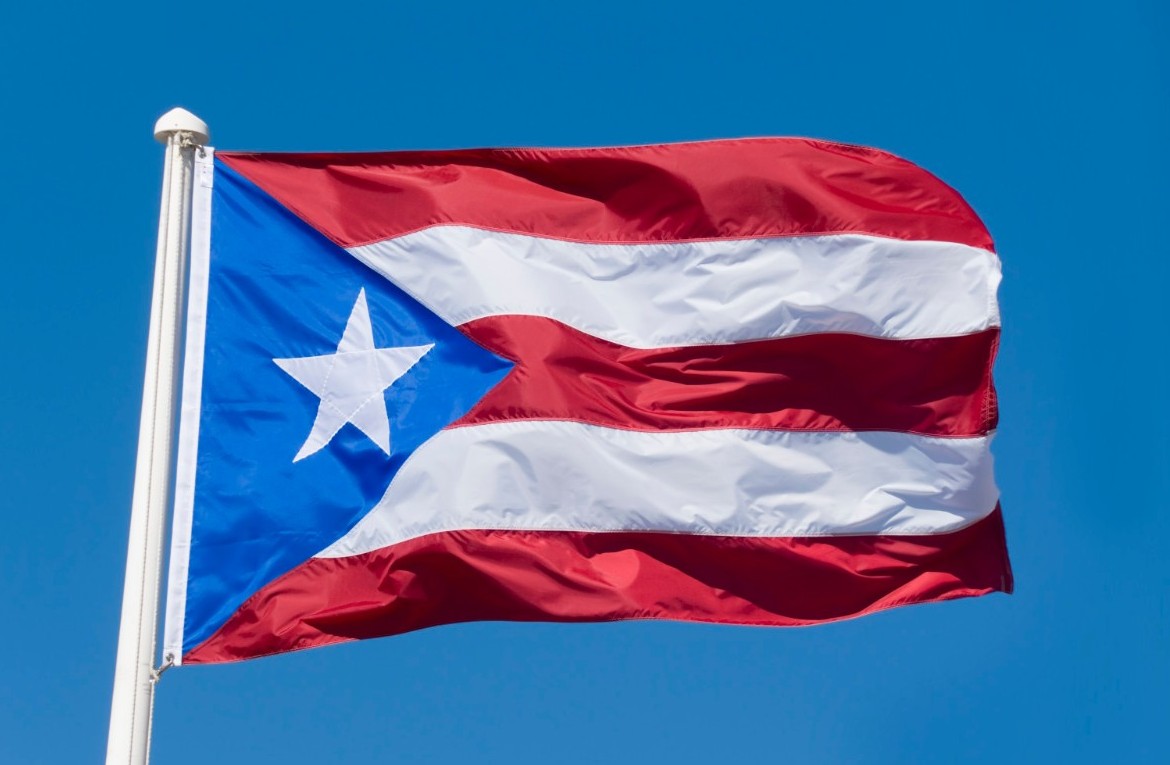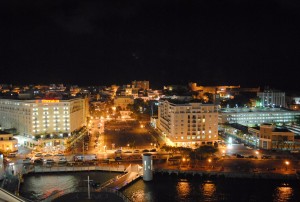
LNG and Renewables: A Future for Puerto Rican Energy
In May, Vice-President Biden chaired the U.S.-Caribbean-Central American Energy Summit in Washington, D.C. They discussed how to diminish the vulnerability of small markets to global energy market fluctuations and decrease the price of electricity throughout the region. Due to their limited fossil fuel reserves and lack of infrastructure, most Caribbean islands rely almost exclusively on high cost energy imports for their electricity.
Enter Puerto Rico, the third largest Caribbean island by population. It is in the midst of a debt crisis, owing over $72 billion, $9 billion of which belongs to the government-owned power utility, the Puerto Rico Electric Power Agency (PREPA). As ASP previously stated, failed energy policy is a central underlying cause of this crisis. Restructuring of PREPA and Puerto Rico’s energy policy is essential to resolving its budget problems. This restructuring is an opportunity to look forward at how to achieve energy security in the Caribbean and set Puerto Rico as a model island for others to follow.
Energy In Puerto Rico
According to the EIA, in 2015, 98% of Puerto Rico’s electricity was produced from imported fossil fuels, with over 50% of it coming from petroleum, commonly in the form of diesel. While only 2% of Puerto Rico’s electricity comes from renewable sources, its legislature mandated that 12% come from renewables in 2015 and 20% by 2020. When this was deemed infeasible by a Siemans study in 2014, the legislature reconsidered its targets, lowering the threshold to 10% by 2020 and 12% to 2025, pushing the target back a full ten years.
These reduced targets are being supplemented by investments in natural gas. As American shale gas enters the world market, natural gas is increasingly competitive against petroleum for electricity generation. With electricity prices higher in Puerto Rico than any state save Hawaii, any way to decrease the price of electricity will help. Puerto Rico is expanding its LNG regasification capacities as the Aguirre Offshore GasPort, the second LNG station in Puerto Rico, continues to progress, expecting to be online in 2018. These two regasification terminals have capacities of 115,000 and 150,900 cubic meters for a combined total of over 265,000 cubic meters.
The Options
In addition to LNG, LPG (propane) has been proposed as an energy option for the Caribbean. The U.S. Virgin Islands have been a pioneer in the use of propane, converting all of their diesel turbines to propane in 2013. It is expected to reduce the Island’s fuel costs by 30%. At current prices, propane is about 4.5 times more expensive than natural gas[i]. However, propane is still less expensive than diesel, and the costs of installing the required infrastructure for propane is lower than for LNG, and as such, propane remains an important fuel for Caribbean nations where it is not economically viable to install LNG infrastructure.
As in many other regions, LNG and propane have the capacity to be a transition fuel between other fossil fuels and renewables. According to the National Renewable Energy Laboratory, Puerto Rico has significant potential for renewable energy. However, as Siemans reports, it will require major investments to achieve above 12% penetration by renewables before 2020. While this would be in line with Puerto Rico’s current goal, the restructuring of PREPA offers a unique opportunity to heavily invest in renewables.
However, this is not the case. In a recent report, the Institute for Energy Economics and Financial Analysis (IEEFA) has criticized the restructuring of PERPA for, among other things, hindering Puerto Rico’s transition to affordable energy. According to the IEEFA,
“PREPA, principally dependent on oil-based power generation, is planning now to turn almost entirely to natural gas by way of a new $2.4 billion investment that gives renewable energy exceptionally short shrift and that undermines energy security by relying on one source of fuel. Despite a legislative mandate to diversify Puerto Rico’s energy mix by increasing investment in renewables, PREPA’s plans include no timeline or financing for developing specific renewables projects.”
What Can Be Done?
Ironically, as a U.S. territory, Puerto Rico does not have all the advantages enjoyed by other Caribbean islands. When Biden chaired the U.S.-Caribbean-Central American Energy Summit, they discussed many investment options for the region. However, as a U.S. territory, Puerto Rico is not eligible for investment from the Overseas Private Investment Corporation (OPIC) and other such groups. In addition to investment challenges, as a U.S. territory, Puerto Rico is covered under the Jones Act, which mandates that shipping between U.S. ports be done by U.S. built, crewed, and flagged ships. This raises the costs of importing U.S. fuels to Puerto Rico, making it economically viable for the island to import some of its fuel from Trinidad, Venezuela, and even Russia.
ASP has previously written on why renewable energy is important to Puerto Rico’s energy balance and economy. If the United States and Puerto Rico succeed in restructuring PREPA in a way that is friendly to renewable energy it could become a model for energy security in the Caribbean. As more and more Caribbean nations look to renewables as a source of energy security, Puerto Rico could lead the way with solar and wind power supplemented by domestic American energy exports. If the United States and Puerto Rico are willing to lead, the rest of the Caribbean can follow.
[i] 1 ft3 natural gas (CH4) = 1,032 BTU 1 gal propane (C3H8) = 91,333 BTU 1,000 ft3 CH4 ≈ $5.00 1 gal C3H8 ≈ $2.00
∴ 1,032,000 (1,032 X 1,000) BTU CH4 = $5 & 91,333 BTU C3H8 = $2
228,332.5 (91,333 X 2.5) BTU C3H8 = $5 (2 X 2.5)
1,032,000 / 228,332.5 = 4.5
∴ C3H8 is 4.5X more expensive per BTU than CH4







